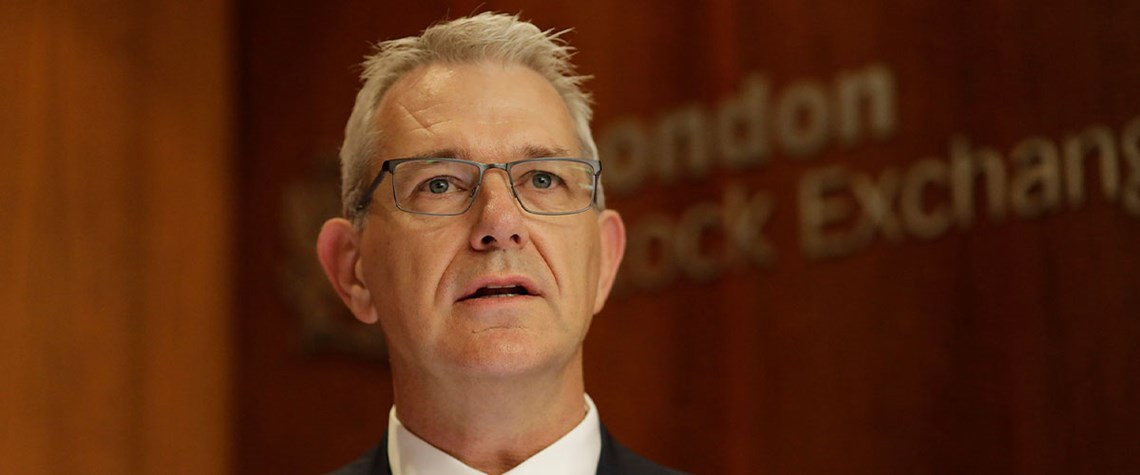Perth-headquartered Woodside Energy has listed on the London and New York stock exchanges following completion of its merger with the oil and gas business of Australian conglomerate BHP. And it aims to leverage the greater focus on energy security, with its promise of a warmer reception for new oil and gas production globally, to boost its future growth plans.
The merger makes Woodside one of the world’s top ten independent oil and gas producers, CFO Graham Tiver tells Petroleum Economist. The LSE and NYSE offer “deeper and broader investment pools than the ASX”, where Woodside was already listed, and the company is keen to broaden its investor base, Tiver explains.
The newly expanded firm is well positioned given the focus on security of energy supply, he continues. Most of the company’s asset base is in OECD countries, particularly Australia—where Woodside operates the North West Shelf (NWS) and Pluto LNG facilities—and the US—where it operates the Greater Shenzi oil and gas field. That means it can offer “more safe and reliable energy supply sources” than some other producers.
Expansion plans
The size of the business has effectively doubled, and Woodside now has the scale and balance sheet to fund its expansion plans, says Tiver. The company has three major investments underway: the Scarborough and Pluto Train 2 development in northwestern Australia, Sangomar in Senegal, and Mad Dog Phase 2 in the US Gulf of Mexico.
The development of Scarborough gas, to be produced through the new 5mn t/yr second train at Pluto, remains at an early stage but is progressing on schedule. The project is due to start up in 2026, Tiver confirms, adding that will be “good timing” in terms of the global LNG supply and demand outlook for the second half of this decade.
And the Sangomar project in Senegal is now “55pc complete... on track and on budget to start in 2023”, Tiver confirms. Sangomar will be Senegal’s first crude-producing project and its first phase includes a 100,000bl/d floating production, storage and offloading vessel.
The BHP merger saw Woodside gain a 23.9pc stake in the BP-operated Mad Dog Phase 2, a 140,000bl/d oe development that is in the final phase of works and will be in commissioning soon, says Tiver.
The BHP deal “brings various development options”, particularly in the Gulf of Mexico, he continues. There are brownfield opportunities to raise production through tiebacks and additional drilling at existing assets, such as the Atlantis and Greater Shenzi fields, and those sorts of incremental investments could have a quick return, Tiver suggests.
The expanded Woodside portfolio also includes mature producing assets, such as the NWS, which “continue to deliver cash returns”. The company brought online an interconnector pipeline in March linking the existing Pluto facility with the NWS’s Karratha gas plant, providing gas to fill emerging ullage and optimise the plant’s production.
Calypso and Trion
There are also less-advanced, more prospective portions in the newly London-listed company’s portfolio. One is the Calypso field in Trinidad and Tobago, where there are “potential gas opportunities”, says Tiver, although he adds that "it is very early days for that”. Nevertheless, the field could perhaps eventually supply gas to Trinidad LNG, he says. Trinidad’s gas production has declined in recent years due to upstream underinvestment, and the country is seeking to reverse that slide and raise LNG exports once more.
Woodside also now has a 60pc stake in the Trion field in the Mexican portion of the Gulf of Mexico. The field comprises a large oil reservoir, but since this was a BHP asset, Woodside is just “looking under the hood” to understand the opportunity, Tiver says.
Woodside’s home base of Australia recently elected a new, Labor government. The administration’s policies are clear, and its Treasury has already given assurances there will be no new taxes, comments Tiver. “As a company, we like that transparency and clarity, because we need fiscal and tax stability in order to plan our investments,” he says.








Comments